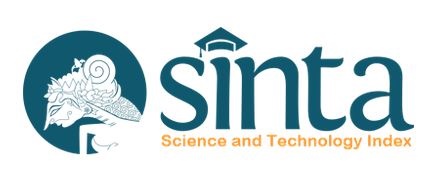Pendugaan Potensi Air Tanah di daerah Rawan Air berbasis SIG dengan Analisis Multi Kriteria
DOI:
https://doi.org/10.12962/geoid.v20i1.2663Keywords:
potensi air tanah, SIG, Multy Criteria Analysis, Geospasial, Kabupaten TubanAbstract
Penelitian ini bertujuan untuk menduga potensi air tanah di daerah rawan air dengan pendekatan Sistem Informasi Geografis (SIG) dan Analisis Multi Kriteria (MCA). Studi ini dilakukan di Kabupaten Tuban dengan mempertimbangkan berbagai parameter geospasial, seperti kemiringan lereng, jenis tanah, kondisi geologi, indeks vegetasi (NDVI), tutupan lahan, curah hujan, dan densitas drainase. Data yang digunakan meliputi DEMNAS, peta geologi, peta jenis tanah, serta data curah hujan dari BMKG. Hasil analisis menunjukkan bahwa potensi air tanah di Kabupaten Tuban berkisar antara kategori sedang hingga tinggi. Faktor utama yang mendukung potensi air tanah tinggi meliputi kemiringan lereng landai (0–5%), jenis tanah berpasir, struktur geologi berupa batu gamping dan endapan aluvium, tutupan lahan dominan berupa agrikultur dan hutan, serta curah hujan tinggi (>1.000 mm/tahun). Kecamatan dengan potensi air tanah tinggi antara lain Montong, Merakurak, Semanding, Rengel, dan Plumpang. Penelitian ini menegaskan bahwa metode SIG dan MCA efektif dalam mengidentifikasi potensi air tanah berdasarkan parameter geospasial. Hasil studi ini dapat digunakan sebagai referensi dalam perencanaan pengelolaan sumber daya air tanah serta mitigasi kekurangan air di daerah rawan.
Downloads
References
Agarwal, R., & Garg, P. (2016). Remote Sensing and GIS Based Groundwater Potential & Recharge Zones Mapping Using Multi-Criteria Decision Making Technique. Water Resources Management, 30. https://doi.org/10.1007/s11269-015-1159-8
Ahada, C. P. S., & Suthar, S. (2018). A GIS based DRASTIC model for assessing aquifer vulnerability in Southern Punjab, India. Modeling Earth Systems and Environment, 4(2), 635–645. https://doi.org/10.1007/s40808-018-0449-6
Anvari, S., & Nejad, M. R. (2022). A GIS-Based DRASTIC Model For Assessing Aquifer Vulnerability A R T I C L E I N F O. Irrigation Sciences and Engineering (JISE), 45(2), 19–29. https://doi.org/10.22055/JISE.2022.41088.2033
Todd, D. K., & Mays, L. W. (2005). Groundwater Hydrology (3rd ed.). Jhon Wiley & Sons, Inc.
Duan, H., Deng, Z., Deng, F., & Wang, D. (2016). Assessment of groundwater potential based on multicriteria decision making model and decision tree algorithms. Mathematical Problems in Engineering, 2016. https://doi.org/10.1155/2016/2064575
Fetter, C. W. (2001). Applied Hydrogeology. Prentice Hall.
Greene, R., Devillers, R., Luther, J. E., & Eddy, B. G. (2011). GIS-Based Multiple-Criteria Decision Analysis. Geography Compass, 5(6), 412–432. https://doi.org/10.1111/j.1749-8198.2011.00431.x
Hamza, M. H., Added, A., Rodríguez, R., Abdeljaoued, S., & Ben Mammou, A. (2007). A GIS-based DRASTIC vulnerability and net recharge reassessment in an aquifer of a semi-arid region (Metline-Ras Jebel-Raf Raf aquifer, Northern Tunisia). Journal of Environmental Management, 84(1), 12–19. https://doi.org/10.1016/j.jenvman.2006.04.004
Mandal, U., Sahoo, S., Munusamy, S. B., Dhar, A., Panda, S. N., Kar, A., & Mishra, P. K. (2016). Delineation of Groundwater Potential Zones of Coastal Groundwater Basin Using Multi-Criteria Decision Making Technique. Water Resources Management, 30(12), 4293–4310. https://doi.org/10.1007/s11269-016-1421-8
Razandi, Y., Pourghasemi, H. R., Neisani, N. S., & Rahmati, O. (2015). Application of analytical hierarchy process, frequency ratio, and certainty factor models for groundwater potential mapping using GIS. Earth Science Informatics, 8(4), 867–883. https://doi.org/10.1007/s12145-015-0220-8
Selvam, S., Dar, F. A., Magesh, N. S., Singaraja, C., Venkatramanan, S., & Chung, S. Y. (2016). Application of remote sensing and GIS for delineating groundwater recharge potential zones of Kovilpatti Municipality, Tamil Nadu using IF technique. Earth Science Informatics, 9(2), 137–150. https://doi.org/10.1007/s12145-015-0242-2
Saaty, T. L., & Vargas, L. G. (2012). Models, Methods, Concepts & Applications of the Analytic Hierarchy Process. In International Series in Operations Research & Management Science (2nd ed.). Springer. https://doi.org/10.1007/978-1-4614-3597-6
Xue, J., & Su, B. (2017). Significant remote sensing vegetation indices: A review of developments and applications. In Journal of Sensors (Vol. 2017). Hindawi Limited. https://doi.org/10.1155/2017/1353691
Zandi, J., Ghazvinei, P. T., Hashim, R., Yusof, K. B. W., Ariffin, J., & Motamedi, S. (2016). Mapping of regional potential groundwater springs using Logistic Regression statistical method. Water Resources, 43(1), 48–57. https://doi.org/10.1134/S0097807816010097








